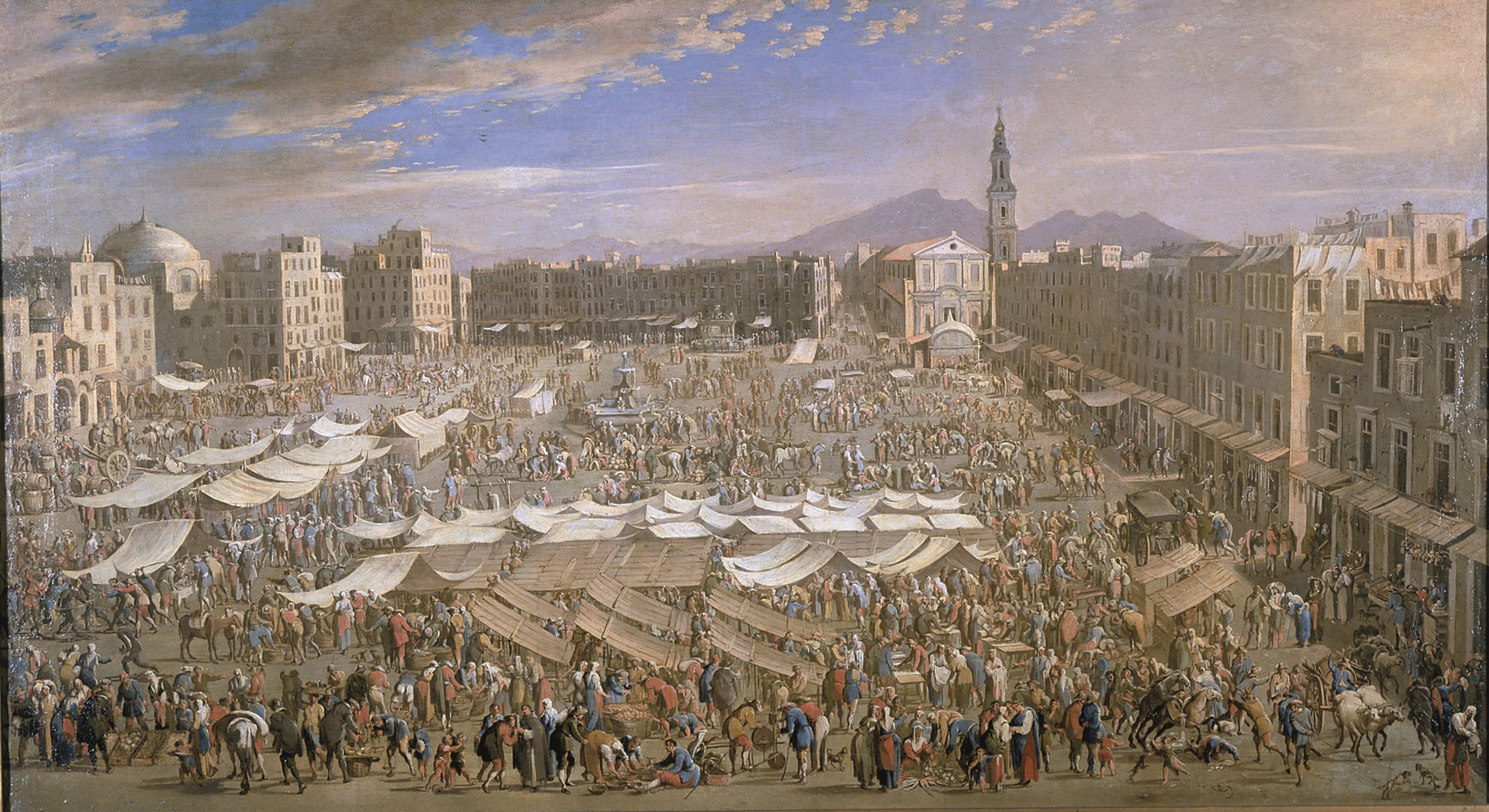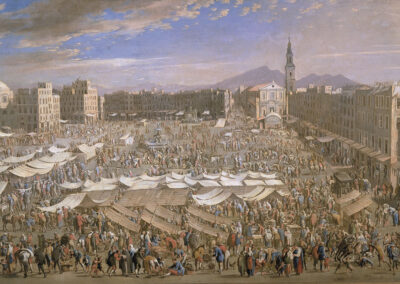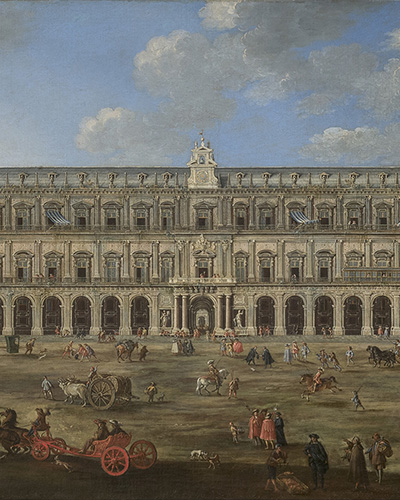Domenico Gargiulo, better known as Micco Spadaro, was also a fine landscape painter and a brilliant illustrator of scenes of everyday life in Naples, a group to which this canvas belongs, depicting a day of bustling activity in the area historically known as the Forum Magnum or Campo Moricino, where the market was located from the Angevin period.
This work appears at number 87 in the inventory of assets drawn up on the death of the 9th Count of Santisteban, Viceroy of Naples between 1687 and 1696. Its author, the painter and treatise writer Antonio Palomino, valued it at 100 doubloons, four times more than the other view with which it shared the same number in the inventory, probably its "pendant", the Royal Palace of Naples by Angelo Maria Costa.
The fountain in the centre of the square was built by the viceroy, Count of Oñate, in 1653, replacing a monument that evoked the Masaniello revolt of 1647, and is one of the elements that have made it possible to date the painting with the greatest certainty. Some of the pictorial resources used by the painter are very similar to those he had used in 1647 to illustrate, in the same space, the aforementioned revolt, which is why specialists in his work have dated it to around 1654 (G. Sestieri and B. Daprà, 1994, p. 292). However, in this canvas the perspective is broader and achieves a greater sense of depth by painting with greater detail and precision the building alignments that direct the eye towards the church of Carmen, with its slender bell tower and Mount Vesuvius in the background, and by reinforcing the horizontal lines with the alignment of the awnings of the stalls and the groups of people, which lose density as they move further away. The various scenes depicting market activity can be of great interest for the study of the material culture, customs and social life of the period.
This canvas, along with the rest of the collection of the house of Santisteban, passed to the house of Medinaceli in 1789 through the marriage of the 3rd Duchess of Medinaceli to the 13th Duke of Medinaceli, a collection which, as most of it was linked by entailed estate, was preserved in its entirety until its legal division at the end of the 19th century and its physical division at the beginning of the next century.



